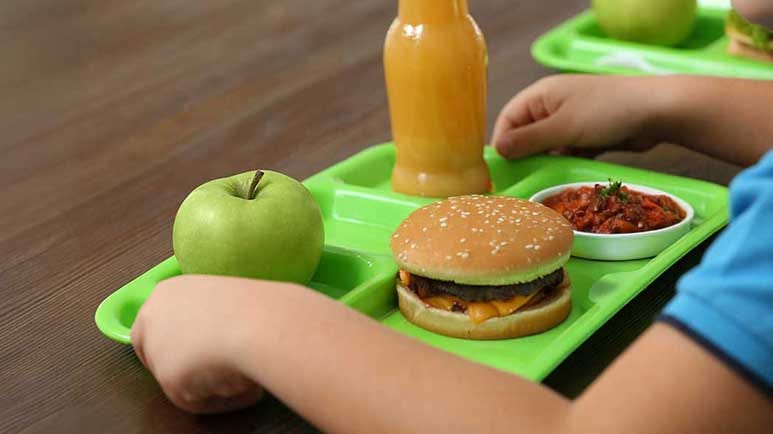California Moves to Eliminate Ultraprocessed Foods from School Lunches — by 2035
Description
STORY AT-A-GLANCE
California became the first state in the U.S. to ban ultraprocessed foods from public school lunches under the “Real Food, Healthy Kids Act,” but the full phase-out won’t take effect until 2035
Ultraprocessed foods — packed with vegetable oils, additives, and refined sugars — are engineered to trigger cravings and disrupt metabolism, contributing to childhood obesity, insulin resistance, and fatty liver disease
A study in JAMA Network Open found that preschoolers who ate the most ultraprocessed foods had higher body fat, larger waistlines, elevated blood sugar, and lower levels of protective HDL cholesterol
The delayed timeline leaves millions of children unprotected for nearly a decade, underscoring the urgent need for parents to remove ultraprocessed foods and vegetable oils from their homes now
You can protect your child’s long-term health by replacing processed snacks with real foods, eliminating vegetable oils, cooking at home, reducing exposure to junk food ads, and teaching kids how to spot marketing tricks

California has made history by becoming the first state in the U.S. to ban ultraprocessed foods from public school lunches. The “Real Food, Healthy Kids Act,” signed into law by Gov. Gavin Newsom on October 8, 2025, will remove industrially altered foods loaded with additives, dyes, and refined fats from school cafeterias by July 1, 2035.1
This decision follows mounting evidence that ultraprocessed foods — those heavily manufactured with emulsifiers, thickeners, and artificial flavors — are fueling an epidemic of poor health among children. Recent data from the U.S. Centers for Disease Control and Prevention show that nearly two-thirds of the average U.S. child’s daily calories come from these factory-made foods.2
They’re engineered for taste, not nutrition, designed to hit what researchers call the “bliss point” — the perfect ratio of sugar, salt, and fat that overrides natural appetite control. This is why your child craves chips or cookies long after feeling full. The consequences are not just temporary weight gain but deep metabolic harm that starts early and compounds with time.
California’s action signals a turning point in the national debate over children’s nutrition and corporate control of the food supply. The question now is what this means for your family’s health — and what steps you can take before 2035 arrives.
California’s Real Food Revolution Begins with Schools
California’s “Real Food, Healthy Kids Act” represents the first law in the U.S. to define and ban ultraprocessed foods (UPFs) from public school lunches. As reported by CNN, the bill requires scientists and public health experts to determine which ingredients and additives are most damaging to children’s health.3 These “foods of concern” will then be systematically phased out of school meal programs that serve over 1 billion lunches annually.
The law defines what counts as ultraprocessed — and why that matters — For the first time in U.S. law, UPFs are officially characterized by ingredients such as nonnutritive sweeteners, emulsifiers, stabilizers, thickeners, flavor enhancers, artificial dyes, and high levels of sugar, salt, and unhealthy fats.
<label class="hide-text" contenteditable="false">Text within this block will maintain its original spacing when published</label>These industrially produced ingredients are designed for taste and shelf life, not nutrition. Many of them are linked to metabolic issues, food addiction, and diseases such as fatty liver and diabetes.
Lawmakers faced heavy resistance from industry lobbyists but still prevailed — According to Bernadette Del Chiaro of the Environmental Working Group, “Industry always kicks and screams and fights like bloody hell to keep these bills from becoming law,” demonstrating how much corporate power is invested in maintaining the current processed food system.4
<label class="hide-text" contenteditable="false">Text within this block will maintain its original spacing when published</label>Despite intense lobbying, the bill passed with overwhelming bipartisan support — only one legislator, a Republican from San Diego, voted against it. This unusual unity underscores how deeply parents and communities want change in what children are fed at school.
The new law delays protection for nearly a decade — While California’s plan to eliminate ultraprocessed foods from schools is a historic first, the timeline is unacceptably slow. Full removal isn’t required until 2035 — meaning an entire generation of children will continue eating the same harmful, additive-laden foods that science already links to obesity, insulin resistance, and fatty liver disease.
<label class="hide-text" contenteditable="false">Text within this block will maintain its original spacing when published</label>Vendors aren’t even required to start reporting their use of ultraprocessed ingredients until February 1, 2028, leaving years of unchecked exposure. Lawmakers framed the delay as a “transition period,” but every school lunch served under the old system prolongs the very crisis this law was meant to solve.
The move redefines how Americans think about food quality — The “Real Food, Healthy Kids Act” shifts the national conversation from calorie counts to ingredient integrity. By recognizing that chemical additives and engineered fats drive chronic disease, the law reframes children’s nutrition around real, whole foods.
<label class="hide-text" contenteditable="false">Text within this block will maintain its original spacing when published</label>This change helps parents understand that health isn’t about eating less — it’s about eating real. The reform also lays the groundwork for future bans on dangerous additives already restricted in Europe, such as certain dyes and flavor enhancers.
Start feeding real food now — California’s plan will take a decade to unfold, but you don’t have to wait to protect your child’s health. By eliminating ultraprocessed foods at home — especially those made with seed oils and additives — you align your family’s habits with the future of public health. Ca






